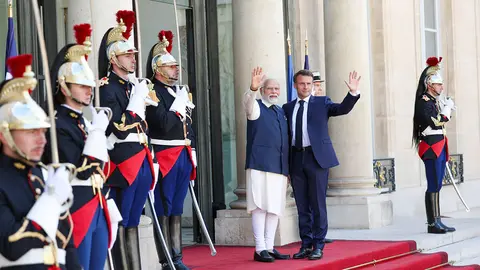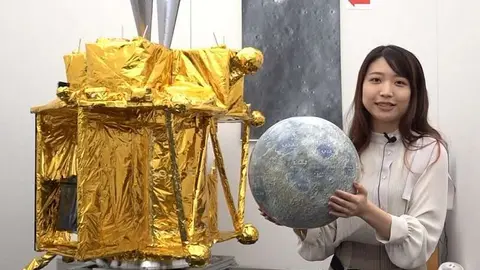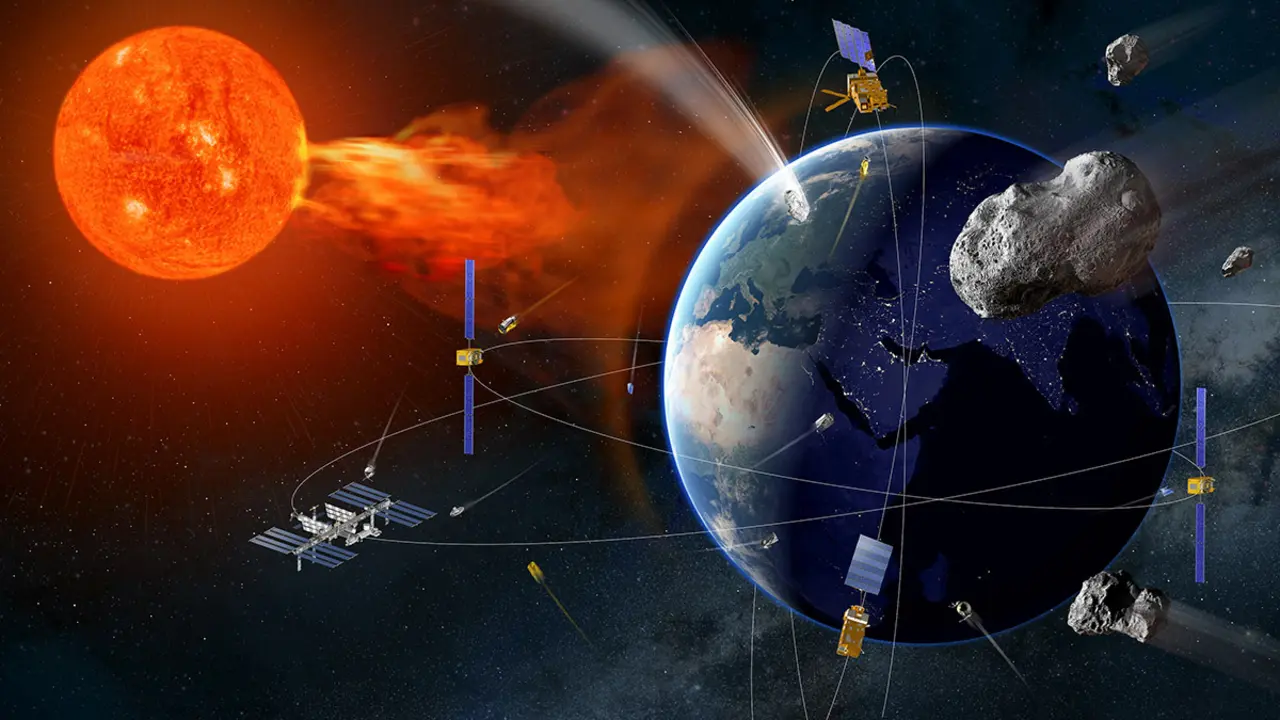India attempts to touch the Moon in August with the Chandrayaan-3 mission

The Indian government led by Prime Minister Narendra Modi is rivalling Xi Jinping's China in every area of the economic, political, diplomatic and military arena in which it can, including space dominance.
And if Beijing has several robotic vehicles on the lunar surface, New Delhi wants to be no less and its Space Research Organisation or ISRO (Indian Space Research Organization) has its Chandrayaan-3 spacecraft on the way. Its two main objectives are to land the Vikram surface module on our natural satellite and to enable the small six-wheeled vehicle named Pragyan inside it to descend and explore its surroundings.
Weighing 3,895 kg at liftoff, the Chandrayaan-3 probe is now on a transfer trajectory from the Earth to the Moon, where it will reach its orbit in early August, according to ISRO forecasts. In the following dates it will describe successive descending orbits and from 17 August it will release the Vikram module, which will fly solo. When it is about 100 kilometres from the lunar soil, which will be on the 23rd, Indian technicians will give the order to start the automatic descent in an attempt to make India the fourth nation to touch the Moon.

Narendra Modi will be watching the critical process of Vikram's arrival on the surface of Selene with close attention, as he was unable to watch live the liftoff of Chandrayaan-3 aboard the indigenously designed and produced LVM-3 heavy launcher. It happened on July 14 at 10.05 a.m. local time (2.05 p.m. local time) to the applause of thousands of Indians gathered around the Satish Dhawan Space Centre on the island of Sriharikota in the southeastern state of Andhra Pradesh.
The Prime Minister was in Paris that day and time, alongside President Emmanuel Macron, as the guest of honour at France's National Day parade. In the rostrum, the French Chief of Defence Staff, General Thierry Burkhard, reported the successful launch to Narendra Modi, who tweeted at the military parade that Chandrayaan-3 "carries the hopes and dreams of our country". And so it does.

With the blessings of the Biden Administration
The most likely scenario is that Vikram - weighing 1,750 kilograms - will get its five retro rockets to cushion its fall speed to less than 2 metres per second, about 7.2 kilometres per hour. If so, its four support brackets must withstand the impact with the ground near the Manzinus U crater at the lunar South Pole.
Indian engineers have equipped Vikram with a radar altimeter and a laser altimeter to calculate its altitude on the ground during its descent on the Moon. It also incorporates a camera to see the ground in detail and prevent it from crashing or landing on a slope or rock.
If the ISRO achieves its goal, the world's most populous country will become the world's second Asian power and the fourth world in touching the Moon, after Russia, United States and China. In case contrary, will add a new and second failure to the obtained with Chandraya-2, the December 6, 2019 December 6 starred against the lunar surface after producing a lunar anomaly in its navigation software and lose control when it was 2.1 kilometres from the ground.

The Indian government wants to make it clear that it is closely following in the footsteps of China, which on December 14, 2013, became the first Asian nation and third in the world to land on the moon with its 1,200-kilogram Chang'e-3 probe and its 140-kilogram six-wheeled Yutu rover.
Chandrayaan-3 has set off for the Moon with the blessings of NASA and the Biden Administration. On 21 June, some three weeks before the flight, the Government of India, through the signature of its ambassador to Washington, Taranjit Sandhu, signed the Artemis agreements by which New Delhi endorses the principles defined by the United States to guide the steps of cooperation in space exploration.
al.

Russia and Japan to fly to the Moon in August
The Chandrayaan-3 spacecraft was developed by ISRO and consists of two structures. One is the 2,148-kilogram propulsion module, responsible for landing the 1,752-kilogram Vikram on the lunar soil. It will then deploy a ramp onto which the small, 26-kilogram six-wheeled vehicle named Pragyan, which is housed inside Vikram, will descend.
Indian technicians have scheduled the mission to be operational for at least 14 Earth days, the equivalent of the period of sunlight in a lunar day, which is 28 Earth days. Without a heating system for Vikram and Pragyan to survive the intense cold of lunar nights, both rovers will be able to generate electrical power to run their on-board equipment as long as their solar panels receive sunlight.

Vikram carries three science payloads: a probe to measure plasma ions and electrons near the surface; an experiment to determine the thermal properties of the lunar surface near the polar region; and a seismograph to delineate the structure of the lunar crust and mantle.
The rover has two navigation cameras to allow technicians on the ground to visualise its progress across the lunar surface. It also incorporates a spectroscope and an X-ray spectrometer to learn and record the chemical composition of the minerals that make up the soil and rocks around the landing site.

But the moon fever continues for the rest of the summer. Igor Mitrofanov, head of the nuclear planetology department at the Space Research Institute (IKI), has confirmed that Russia plans to launch its 1,750-kilogram Luna 25 descent module from the Siberian Vostochny Cosmodrome on 11 August. Japan plans to launch its SLIM mission, a 590-kilogram module also due to land on Selene, from its Tanegashima base on 26 August.











